Review for Star Wars: The Complete Saga
Introduction
At least it was the Complete Saga back when this Blu-ray collection was released in 2011. For a completer saga, Fox and Disney will have to collaborate on a seven film boxset, soon to be eight and then nine, potentially keeping on growing ad-Bond-um. I wasn’t actually going to get this release, telling myself that I was satisfied with the DVDs. Then I actually watched a few Blu-rays, and the difference was so intense that what started as a select double-dip on my most cherished titles became a full-scale upgrade, just as I once did with VHS and DVD. Besides, it was on sale. On the bright (if you can call it bright) side, this may be as far as the Star Wars double dips go. George Lucas was always on the cutting edge of filmmaking technology, and that includes the digital cinema revolution. Attack of the Clones and Revenge of the Sith were both early digital films, while when Lucas re-mastered and released his Special Editions of the original trilogy, those versions were digital as well, unlike the original film prints. This being the ten years following the mid-nineties, digital film resolution was such that other than The Phantom Menace shot on celluloid, 1080p Blu-ray is about as much resolution as you can squeeze out of Episodes II-VI.
I tell a lie, if Disney go and release the original trilogy, pre-Special Edition on Blu-ray, I will buy those again. It was recently watching Episode VII for the first time that nudged the (in)-Complete Saga to the top of my viewing pile, as I finally felt in the mood to revisit the Star Wars universe. It’s been five years since I last watched a Star Wars film, and two years since I bought this collection, and let it languish in my to-watch pile. Hopefully five years has been long enough for me approach these films as fresh again, although somehow I doubt it.
This is a nine disc release in digibook packaging, one disc to a ‘page’, which slips into a nice, rigid artbox. There’s also an art booklet slipped in a pocket inside the digibook. The collection has subsequently been re-released in more compact packaging.
Introduction: Episode I: The Phantom Menace
A trade dispute threatens the sovereign world of Naboo. The taxation of trade routes by the Republic has led to the Neimoidian dominated Trade Federation to blockade the peaceful world until their demands are met. Two Jedi, Qui-Gon Jinn and his young Padawan, Obi-Wan Kenobi have been sent to mediate a peaceful settlement between the two parties. However, they arrive to find that there are darker motives to the events. The Jedi escape this trap and with the dubious aid of a Gungan inhabitant named Jar-Jar Binks, liberate the Naboo leader Queen Amidala, and persuade her to accompany them to Coruscant, the centre of the Republic, to present her world`s case to the Republic Senate. But running the Federation blockade proves problematic, and their damaged spaceship can only limp as far as Tatooine, a world outside the Republic`s sphere of influence. Attempting to secure replacement parts, Qui-Gon encounters a precocious young slave, unusually strong in the Force. His name is Anakin Skywalker...
Picture: Episode I: The Phantom Menace
The Phantom Menace’s 2.35:1 widescreen transfer is gorgeous. The image is clear and sharp, colours are rich and vivid, and the film looks stunning. There’s certainly none of those issues with edge enhancement that the DVD had, which I overlooked when I used to watch the film on a TV small enough not to make a difference. The first, and indeed only time I watched that disc scaled up to flat panel display was quite the shock. Not with the Blu-ray, as this is a revelation of clarity and detail. When you take in the Naboo sets and locations, the fantastic regal costume designs in 1080p HD, it’s as if watching the film for the first time. There is a light layer of film grain, but it does look properly filmic and organic. The downside is the CGI, which has dated badly. Nothing dates as quickly as CG though, and with most of the creatures and vehicles now looking like the intermediate shots that you find in multi-angle CGI featurettes in modern films, characters like Jar-Jar and Watto now look curiously unfinished. That’s with the exception of digital Yoda, who replaces the awful puppet that was created for the first prequel, and now offers some consistency between the prequel trilogy of films. It’s also here that the first departure from live action occurs, with nary a live element in the Gungan vs. Droid Army battle.
Sound: Episode I: The Phantom Menace
You have the choice between a sh*t-eating-grin inducing DTS-HD MA 6.1 Surround English track, DD 5.1 English Audio Descriptive, Spanish, French, Portuguese, along with DTS 5.1 French. You have subtitles in these languages along with Dutch, Finnish, Swedish, Norwegian, and Danish. The lossless surround is epic, wholly immersing you in the film, really bringing the sounds of Star Wars to life, and relaying the John Williams score with even more clarity. Remember how the Pod-race was set up as the ultimate home cinema demo? It’s even more so with the Blu-ray. And even with all this audio extravagance, the dialogue (Gungans, Neimoidians, and Toydarians excepted) remains clear throughout.
Extras: Episode I: The Phantom Menace
The disc doesn’t dawdle, booting straight to an animated menu, and you get a progress bar popping up when the film is paused, or being navigated through.
On this disc you’ll find two commentaries, the first is identical to that on the DVD, a scene specific patchwork track put together with input from George Lucas, Rick McCallum, and other key members of the crew. The second commentary is new to this release, but is itself a patchwork track put together from archival interviews with the cast and crew (some of it repeated from the first commentary track) but it does offer some actor input as well.
Conclusion: Episode I: The Phantom Menace
Five years ago, I was a little more forgiving of The Phantom Menace. This Blu-ray may look and sound spectacular, but it’s still the same film, and The Phantom Menace is a disappointing start to the Star Wars saga. It should be great, I mean it’s full of action, loads of space battles and lightsaber duels, indeed The Phantom Menace still has the best lightsaber fight in all of the Star Wars movies, in Qui-Gon and Obi-Wan vs. Darth Maul. But in actuality, this first film is by turns tedious and childish.
Star Wars and Empire were great movies that children could enjoy, but once Jedi came along, George Lucas started making children’s movies, inserting elements that played specifically to younger audiences. The Phantom Menace is the worst of all six in that respect, with the Gungans and the goofy Droid army taking too much screen time. And much as I try to enjoy this film, Jake Lloyd’s performance as Anakin is unbearable. Actually George Lucas has a talent for getting poor performances from great actors; just look at poor wooden Samuel L. Jackson here, and Oscar winner Natalie ‘monotone’ Portman, so child actor Lloyd never had a chance.
There are good things in this film. Certainly the mythological aspects of the Star Wars universe, how this film ties into the other five makes it essential. And there are moments in the film that really do shine, the action sequences are epic, especially the lightsaber duels, Ian McDiarmid is great as Senator Palpatine/Sidious, and back then it offered a new look at the Star Wars universe, when the Republic was in its prime, and everything was shiny and new. But you can’t get away from the tedium. Even the pod race, which was the best thing about the film in the cinema, is overlong on home video, because Lucas added another lap to the race. I’m getting to the point where I’ll be setting an alarm clock for the final lightsaber duel. Thankfully The Phantom Menace is the first film in the collection.
6/10
Introduction: Episode II: Attack of the Clones
Ten years have passed since the events of The Phantom Menace, and internal divisions in the Republic have erupted into outright secession, as thousands of worlds under former Jedi Count Dooku break away from the central government. Many in the Senate call for the creation of an army to defend the Republic, where too few Jedi cannot. Standing firmly against this proposal is Senator Padmé Amidala of Naboo, but when she returns to Coruscant to make her position clear, she barely escapes an assassination attempt. Obi Wan Kenobi, and his precocious but arrogant Padawan, Anakin Skywalker are assigned as her bodyguards, but Anakin is still smitten with Padmé. Attempting to explain his feelings to Obi Wan only results in another lecture, but their heated discussion is interrupted by another assassination attempt. Master and apprentice pursue the suspect, but before they can question her, she’s assassinated in turn. Obviously Senator Amidala’s life is in greater danger than previously thought, and the Jedi council instruct Anakin to escort her back to Naboo and safety, while Obi Wan tracks down the figures behind the assassination plot. But both paths will lead to considerable danger for the Republic.
Picture: Episode II: Attack of the Clones
Attack of the Clones gets what to my eyes looks like a pixel perfect 2.35:1 widescreen 1080p presentation on this disc, unsurprising given the digital source. The image is stable and clean, with no signs of compression to my eyes. The issues you might find are inherent in the source. Digital cinema is a technology that is bedding in now, filmmakers use high resolution cameras, and a lot of the work done in post production is to make the image look more ‘filmic’ for want of a better word, to better suit our audience pre-conceptions about movies. That might mean adding artificial grain, increasing the level of image depth, adding deliberate anamorphic distortion, and other slight imperfections. When Attack of the Clones was made, this was all new technology, and filmmakers hadn’t started tinkering with the image as much, beyond colour grading.
Attack of the Clones looks plastic, artificial. There’s obviously no film grain, and there’s none of the organic feel of film either. The weakness of early digital comes across in a lack of depth, which the movie compensates for by using a whole lot of colour, avoiding shadow detail and darker scenes. That makes it feel doubly artificial, compounded by a paucity of actual sets, and a whole lot of digital backlot work, and once again, digital characters like Dex, Jar-Jar and Yoda that looked fine fifteen years ago, now look unfinished. Attack of the Clones’ visuals are dating even faster than those of the Phantom Menace. Last night I was struck by how much better the Youtube trailer for Star Wars Battlefront looked than the Battle for Geonosis. But, the headbutt is back, originally excised from the UK release by the BBFC as an imitable technique.
Sound: Episode II: Attack of the Clones
Unsurprisingly you get the choice between a DTS-HD MA 6.1 Surround English track, DD 5.1 English Audio Descriptive, Spanish, French, and Portuguese, along with DTS 5.1 French. You have subtitles in these languages along with Dutch, Finnish, Swedish, Norwegian, and Danish. No complaints about the audio, which once again transports you to a galaxy far, far away and drops you right in the middle of the action. The seismic charges sounded great on DVD; on Blu-ray they might just rattle your teeth loose from your jaw. Unfortunately, they never fixed the dialogue in post, and given George Lucas’ penchant for tinkering with his movies, he missed a chance to fix the dialogue for the Blu-ray.
Extras: Episode II: Attack of the Clones
It’s the same again for Attack of the Clones, a quick booting menu, and the only extras on the movie disc are the two commentaries, the old one from the DVD, and a new patchwork commentary put together from contemporary interviews, which offers some actor insight along with the rest of the crew. I sampled a few minutes of it, and I love the point when it comes to the Coruscant cantina scene, and hearing the joy in Ewan McGregor’s voice recalling the day that they got an actual set to perform on.
Conclusion: Episode II: Attack of the Clones
I really unleashed some verbiage when I reviewed the DVD, so I’d rather not go down that route again. I must say that time has actually made me less forgiving of this film and its myriad of flaws, where you might have expected the reverse. I’m less of a Star Wars fan than I was when it was released, and I no longer immerse myself in its universe, trying to fit each segment, film, TV, videogame, comic or book into a big picture. Taken on its own merits, Attack of the Clones is a disjointed, messy film, trying to be a film noir detective movie, a war movie, and a romance all in one. It fails to succeed at any.
But what hamstrings it is that romance. I don’t know how Lucas directed his actors, but the thoughts, ‘creepier, more intense’, and ‘passionless, try not to believe in the moment’ spring to mind. The actors aren’t helped any by the dialogue either, which is excruciating. John Williams’ score has to do all of the work of the romance by itself, and good as his music is, it can never be that good. The end result is a sinking feeling every time the film cuts away from Obi Wan Kenobi’s investigation on Kamino. If it had made the mystery the whole focus of the film, let the romance develop in the background, leaving the start of the war right till the end of the final act, I think it would have been a stronger film, especially as with the sheer digital overload of the Geonosis battle, there’s no sense of suspense, peril, or excitement. It doesn’t feel real, not even as real as the Ewoks versus the Stormtroopers at the end of Jedi.
On the other hand, Attack of the Clones does deliver more in the way of entertainment and interest than The Phantom Menace. It makes the prequel universe a lot livelier, a lot richer and dimensioned than the first film, and say what you might about Hayden Christensen and the bratty way that Anakin Skywalker’s character is written (he’s about twenty, not thirteen!), he’s at least watchable, whereas these days I wind up watching The Phantom Menace wishing that they’d cut the Jake Lloyd bits out.
7/10
Introduction: Episode III: Revenge of the Sith
The Clone War that began at the end of Attack of the Clones is coming to its conclusion as Revenge of the Sith begins. In a last ditch attempt to gain ground, the Separatists lead a daring attack on Coruscant, capturing Supreme Chancellor Palpatine, in an effort to hold him and the galaxy to ransom. It’s down to two plucky Jedi to mount a rescue attempt. In actuality, this is the first move in the endgame for the Dark Lord of the Sith, Lord Sidious, as one of the plucky Jedi is none other than Anakin Skywalker, the prophesied one, the one who will bring balance to the Force. Lord Sidious has decided who his next apprentice shall be, and all that remains is to sow seeds of mistrust, and lay the perfect breadcrumbs of temptation, and the plan that has been developing a thousand years will unfold, and the Sith will rule the galaxy once more. The key to Anakin’s downfall is his pregnant wife Padmé, for he’s started having nightmares about her, the same precognitive visions that presaged his mother’s death. If the Jedi won’t help him protect her, where Lord Sidious can, the conditions are ripe for a Jedi to fall to the dark side.
Picture: Episode III: Revenge of the Sith
I could just cut and paste the bit from the Attack of the Clones review. Revenge of the Sith gets a pixel perfect 2.35:1 widescreen 1080p transfer. There are no problems with compression or artefacts to my eyes, just a faithful representation of the source material. There’s been three years of advancement in digital effects technology, so some of the CGI creations still seem passable today, although I still shake my head at how the clones were accomplished (pasting Temuera Morrison’s face on digital models). But once again, I’m left with a feeling that the film is plastic, unreal, intangible. Compare the digital Tantive IV at the end of Revenge of the Sith, to the model Tantive IV at the start of A New Hope, and you’ll see what I mean.
Sound: Episode III: Revenge of the Sith
Ditto with the audio, which once more is available in DTS-HD MA 6.1 Surround English track, DD 5.1 English Audio Descriptive, Spanish, French, and Portuguese, along with DTS 5.1 French. You have subtitles in these languages along with Dutch, Finnish, Swedish, Norwegian, and Danish. Once again, it’s John William’s music which does the heavy lifting when it comes to emotion and drama. The surround is epic in bringing this across, along with the action sequences. And once more the dialogue is excruciating. Anakin and Padmé’s love story continues to nauseate, while the only way the term ‘youngling’ won’t invoke involuntary laughter is if we as a society have to use it for the next ten years in place of ‘children’ until it becomes second nature.
Extras: Episode III: Revenge of the Sith
Do you get the feeling that I’m cutting and pasting a lot in this review? A quick booting menu, and the only extras on the movie disc are the two commentaries, the old one from the DVD, and a new patchwork commentary put together from contemporary interviews, which offers some actor insight along with the rest of the crew.
Conclusion: Episode III: Revenge of the Sith
Here’s the thing. George Lucas wanted to make Star Wars in the style of a 30s sci-fi action serial. He actually wanted to make Flash Gordon, but he couldn’t get the rights, hence his original story. With the original trilogy, and especially the first movie, Lucas didn’t have the power and control that he had over the prequels, and so those films departed from that original vision, not least because of the actor performances. Harrison Ford’s ironic take on Han Solo is so far removed from the earnest and theatrical grandiosity of those early film serials that you might say that he single-handedly sabotaged Lucas’ vision.
With the prequel trilogy, Lucas got a second chance to emulate the 30s action serials, and this time we get the full on unwieldy dialogue, the earnest statements of emotional turmoil, and the grandiloquent pronouncements. There’s not a trace of irony in the whole thing, it’s all completely played straight. The problem is that the actors, for the most part aren’t up to it. They’re not playing in that theatrical style that so illuminated those serials. Whether that’s down to the actors, or down to a failure of communication on the director’s part is anyone’s guess.
One actor who does get it is Ian McDiarmid as Palpatine. He’s channelling Ming the Merciless in his portrayal, oozing villain through every pore, milking the role just as any thirties villain would. But while he’s oozing duplicity and guile through every pore, it requires the actors playing off him to portray their obliviousness to his machinations with utter honesty. The audience has to believe that they truly have no idea that Palpatine is the villain. Instead they play it straight in the modern style, so there’s a sense throughout that the characters are two steps behind the audience. It becomes a pantomime. Star Trek Voyager had a couple of holodeck episodes, featuring the fictional Captain Proton serial. That captured the style far more effectively than Lucas’ prequel trilogy.
Just like Attack of the Clones, Revenge of the Sith just doesn’t hang together all that well as a single narrative. It’s a collection of great moments, Lucas is a stunning visual storyteller, but when it comes to actor performances, character, the overall story it falls flat, so much so that when it comes to the film’s conclusion, there’s no emotional weight to it at all. The thing that disappoints me most about the prequels in general and this film in particular is that there are no surprises. The key points of the prequel story are pretty much stated as fact in the original trilogy. We’re only seeing the images and sound applied to the words. The only surprise for me was that the Clone Wars were fought against droids. I thought they’d be Clone versus Clone.
7/10
Introduction: Episode IV: A New Hope
The rebels have stolen the plans to the Death Star, and are trying to escape the Empire’s clutches. Darth Vader’s star destroyer tracks Princess Leia’s ship to an out of the way planet called Tatooine. While the ship is captured, the droids R2D2 and C3P0 escape with the plans and make it to the planet’s surface, where they encounter a simple farm boy named Luke Skywalker. But Luke is heir to a remarkable legacy as revealed to him by the eccentric hermit Obi Wan Kenobi, the power of the Force. Before he can come to terms with this however, events drive Luke to go head to head with the evil Empire, hooking up with a cocky smuggler and his hirsute sidekick, and rescuing a princess along the way.
Picture: Episode IV: A New Hope
It’s another 2.35:1 widescreen 1080p transfer, and at first glance it’s a lovely looking film, rich in detail, wonderful colours, and with a decent level of film grain. It looks properly filmic too, despite being an early conversion to digital format when it was initially restored in the mid-nineties. There’s even a twitchy frame about a third of the way in. But the Blu-ray format really does reveal the limitations of the restoration where DVD gave it a pass. The obvious issue is a red blush in the centre of the frame, particularly apparent in the Tatooine desert sequences. Something about the skin-tones seems a little pushed, certainly not plasticky or DNR’d, but ever so slightly unnatural, although that might be a legacy of the film stock originally used. Star Wars now looks like an old film, aggressively rejuvenated, and it’s long overdue a more sympathetic 4k restoration. Should that happen, it will also require the removal of the ‘updated’ effects sequences, which were finished at 2k. A lot of that CGI looks pretty weak now, the seams between the new effects and old more apparent on Blu-ray. The Stormtroopers on Dewbacks will never be more than laughable, while Jabba has never worked in this film. And Lucas can’t stop tinkering. R2-D2’s hiding place is an awful addition to the film.
Sound: Episode IV: A New Hope
It’s the same choices again when it comes to the audio, although it will be the DTS-HD MA 6.1 Surround English track that will draw the most interest. The first thing that I noticed was that Star Wars sounds weird. This is probably the film that I have watched the most in my life. I first saw it on TV, then the second time around I taped it, and wore that tape, and then a subsequent tape out. I then bought the VHS tape, followed by the widescreen VHS, which itself was then followed by the Special Edition VHS, and then latterly the DVD collection. Other than three viewings of the Special Edition in cinema, my sole exposure to Star Wars has been at 25 fps PAL format. Suddenly, everything was 4% slower, pitched 4% lower. It sounds weird, but I slowly got used to Darth Vader sounding even more menacing!
But this film sounds fantastic, the surround really taking you to a galaxy far, far away, and dropping you right into the middle of the action, and John Williams’ epic soundtrack. There’s more tinkering too, although this time it’s almost all for the best. Obi-Wan’s Krayt dragon call sounds more startling than the melodic hooting of the previous version (although I still prefer the original Bantha roar), the echoes in the Death Star cross bridge have been dialled down again it seems, but best of all, the Force Fanfare ahead of the Death Star attack is back where it belongs, after being egregiously removed from the English language DVD release. I’m happy with the sound.
Extras: Episode IV: A New Hope
It’s the same deal again; the animated menu leads to two commentaries. The DVD commentary with George Lucas, Carrie Fisher, Ben Burtt, and Dennis Muren is carried forward, while new for this release is the Archival Interviews with cast and crew, peppered with comments taken from across history.
Conclusion: Episode IV: A New Hope
I had actually grown a little tired of Star Wars. There is watching a film too much, and in my childhood to early adolescence, I must have got close to three figures. That wasn’t made any easier with the Special Edition, with two restored, and two wholly superfluous scenes. The Jabba Encounter in Docking Bay 94 was a pure Easter Egg, with a digitally inserted Boba Fett, a scene which did nothing but repeat the narrative from the earlier Greedo encounter. Then there’s the Luke Biggs reunion, an ugly speed-bump in the action paced highway to the film’s climax, and which means nothing without the Luke Skywalker character scenes, still deleted from the start of the film. My favourite childhood film has felt leaden paced and overlong for quite a while now.
And that’s the version I watched last night on Blu-ray, and I have to say that I loved Star Wars like it was the first time again. It was brilliant, action packed, fun, excellent entertainment. I think it comes down to a case of absence making the heart grow fonder, as this time I’d left a full five years between re-watching the film. Then again, five years without the prequels in my life only made those films weaker in the interim. Not Star Wars, with its tale of an unlikely farm boy saving the galaxy still resonating well, with actor performances unfettered by a director empowered by digital technology. There’s a combination of fresh-faced optimism and post-Vietnam cynicism that infuses the film almost like a culture clash that enlivens the whole romp.
Star Wars is still one of the greatest films of the 20th Century, but that only remains apparent as long as you don’t overindulge. Let it vanish from your consciousness before rediscovering it and you’ll get the best out of it. But it’s the original film that really needs to be rediscovered now, given a restoration fit for the 21st Century, and we can once again visit a galaxy where Greedo doesn’t shoot, where Jabba remains off screen, and where R2 doesn’t have to go on a rapid weight-loss programme to hide behind some rocks.
9/10
Introduction: Episode V: The Empire Strikes Back
The Rebels have been on the run since their victory in the previous film. But the Rebellion is a minor matter for Darth Vader and his master the Emperor, as they have learned of a new threat to their Empire. Luke Skywalker is strong with the Force and must not become a Jedi, yet turned to the dark side he would be a formidable ally. As Vader hunts for the rebels, Luke, Han and Leia are having trouble of their own on the ice planet of Hoth. The Empire attacks and they barely manage to escape. Han and Leia take a misfiring Falcon and try desperately to evade their pursuers, while Luke follows a ghostly vision to a swamp planet where he encounters a diminutive Jedi Master, and begins his Jedi training in earnest. But the path to the dark side is tempting, and Luke is destined for a confrontation that will cost him dearly, and challenge everything he believes.
Picture: Episode V: The Empire Strikes Back
The Empire Strikes Back gets a 2.35:1 widescreen 1080p transfer, and unlike Star Wars, the print looks pristine, practically timeless. Of course it’s the same deal, an early digital print of the Special Edition (tweaked for the 2004 DVD release and probably tweaked again for this Blu-ray), but there are no signs of age, no print damage, and it looks properly filmic, although one scene in the Hoth control room early on exhibits a little flicker. What I like best about The Empire Strikes Back special edition is that it had the least amount of fiddling done to it, and that’s still the case here. The model and original special effects work used in this movie were and still are spectacular, and just as with the other movies, it’s really only the CGI additions that stand out. In this case, it’s the exterior visuals of Cloud City on Bespin. And once again, the lightsabers lack consistency.
Sound: Episode V: The Empire Strikes Back
You have the same audio options as before, although I was a little less pleased with DTS-HD MA 6.1 Surround English this time. It’s the typical first world problem of having the dialogue a little low in the mix, and if you just turn the volume up to the level where the dialogue’s comfortable, the action sequences and music will probably annoy the neighbours. But it is an epic surround track, you’re fully immersed in the film, and this is probably John Williams’ strongest Star Wars score of the lot. And yes, Aussie Boba Fett is still here, “He’s no use to me dead, cobber!”
Extras: Episode V: The Empire Strikes Back
The animated menu leads to two commentaries. The DVD commentary with George Lucas, Irvin Kershner, Carrie Fisher, Ben Burtt, and Dennis Muren is carried forward, while new for this release is the Archival Interviews with cast and crew, peppered with comments taken from across history.
Conclusion: Episode V: The Empire Strikes Back
Best Star Wars Movie Evah! I believe that is the vernacular from ten years ago. There’s not a lot I can say about The Empire Strikes Back that hasn’t been said for over thirty-five years. It’s still close to perfect even now, despite George Lucas’ attempts to tweak it. Apparently Luke screaming as he fell through Cloud City was too much even for George, and that had vanished by the time the DVD came out. But once again, the only things that detract from this film are those things that were added years later. While it’s nice to see Ian McDiarmid replace the ‘owl’ as Emperor, the dialogue is a little too expository. We don’t need to see Vader call for his shuttle, and Boba Fett’s ‘new’ voice is jar-jarring. But unlike the changes in Star Wars, these are minor pinpricks.
That’s because the underlying story is so solid. It’s about Luke finding Yoda and undergoing Jedi training, and it’s about the relationship between Han and Leia, and it’s also about Vader’s hunt for Luke Skywalker, a potential dark ally for the Empire, or a foe to be eradicated. It’s all character arcs; it’s about relationships changing, and about truths being revealed. It’s not just about action sequences, and heroes fighting against desperate odds for their freedom, with big-ass special effects signifying the climax of the film. The Empire Strikes Back was where Star Wars grew up. Alas it would subsequently lapse into immaturity again, and remain there to this date.
Five years break from Star Wars was just enough time for me to appreciate it again. Yet somehow the same wasn’t true for The Empire Strikes Back. I guess that I still know it inside and out, back to front, and the joy of discovering it in high definition wasn’t enough to off-set my familiarity with the film. Having said that, it is still my favourite Star Wars movie, and I enjoyed every frame of it, even if I was mouthing the dialogue ahead of the actors (except for Luke’s line after R2 gets spat out on Dagobah. I swear that’s different each time I watch this film!). Just as with Star Wars, the only thing that would make me happier is if the original un-Special versions would get an official release.
10/10
Introduction: Episode VI: Return of the Jedi
With the Empire building a second Death Star, things have never looked bleaker for the rebels. Luke has to complete his training, and finally learn the dark truth about his heritage, but an opportunity has arisen to strike at the heart of the evil Empire, and rid the galaxy of the Emperor once and for all. The rebels are sorely mistaken though, as the Emperor has a plan of his own, to recruit a new apprentice to serve at his side. The fate of the galaxy will be decided by a handful of guerrillas on a forest moon, a desperate last-ditch battle in space, and the final confrontation between Darth Vader and Luke Skywalker. I hope someone remembers to thaw out Han Solo first.
Picture: Episode VI: Return of the Jedi
Unsurprisingly, what you get here is a 1080p 2.35:1 widescreen transfer. Jedi might just edge Empire in terms of crispness of transfer, clarity of image, but it’s a narrow margin. The image is certainly pleasant to watch, with no issues to my eye, other than one moment of softness. Also unsurprisingly, it is the digital enhancements to the film that have aged the worst, with the Sarlacc’s beak looking particularly low resolution. The lightsabers have the best consistency and colour of any of the original trilogy, but once again the duel in the Death Star bugs me, down to the shadows cast on the floor by the original props.
Sound: Episode VI: Return of the Jedi
One final time, we have the same audio and subtitle options, and the DTS-HD MA 6.1 English Surround track still packs a punch. It’s a wholly immersive experience, bringing out the best from the action sequences (the speeder bike chase is awesome), and John Williams’ music, while the dialogue is clear throughout. It is still a little low in the mix, but this time I had no need to ride the volume control. As for audio changes, ‘Jedi Rocks’ is still awful, and as for Darth Vader’s ‘Noooo!’ at the end... just... no.
Extras: Episode VI: Return of the Jedi
The animated menu leads to two commentaries. The DVD commentary with George Lucas, Carrie Fisher, Ben Burtt, and Dennis Muren is carried forward, while new for this release is the Archival Interviews with cast and crew, peppered with comments taken from across history.
Conclusion: Episode VI: Return of the Jedi
George Lucas made a lot about the mythical qualities of the Star Wars story, especially when he came to making the prequels, an indication of just how cyclical the story was. I don’t think he was talking about the similarities between The Phantom Menace and Return of the Jedi when he said that, although that might just be my particular take on Return of the Jedi the last few times that I watched it. Both movies end in a three-way battle, primitives versus technology on a planet’s surface, space battle in orbit, and a duel between Jedi and Sith, with the action intercutting between the three. And just as with The Phantom Menace, The Return of the Jedi has become an exercise in waiting for the cool bits, rather than a holistic movie experience.
Fortunately there are a lot more in the way of cool bits here, and Jedi has one thing that Menace does not, it has great characters and it still has a sense of humour about it. I am really just waiting for the lightsaber duel at the end, and the great space battle, still one of the best action sequences put to celluloid, and I can take the comic Ewok insurgence as the price of admission, but the Jabba’s palace sequence has some entertainment value to it (Jedi Rocks notwithstanding), and the action on the sail barge and skiffs is good stuff. Luke, Yoda and Obi-Wan on Dagobah has some heart to it, while the rebels’ Ewok adventure ahead of the finale is fun, with that speeder bike chase. There’s nothing as tedious as the Senate committees, or meeting little Annie on Tatooine to bring things to a crashing halt. Return of the Jedi is a fun movie to watch.
It doesn’t have the ‘new car’ smell of Star Wars, our first trip to a galaxy far, far away, where everything was a brand new discovery, and it also has all the intelligence, and character nuance of Empire Strikes Back removed, leaving it less of a film that appeals to a broader audience. This one really does push the merchandising. Once again, I find myself nostalgic for the film I first saw, the one without the egregious rock number in Jabba’s Palace, the one without the ‘Nooo!”, and the one without an ending that feels longer than that of Lord of the Rings. Want to read a scary thought? It was twenty years after Star Wars was made that George Lucas went back and created these Special Editions. It’s now been 20 years since the Special Editions were released. It’s past time to get the original Original Trilogy out on Blu-ray.
7/10
The Extras Discs
I was expecting to wield out a long list of extra features, possibly giving them an article of their own. After all three extra Blu-ray discs promise a lot, especially when you press Play All on the top menu of the first two discs and check the run times. Disc 1 lasts 5 hours, 1 minute and 38 seconds, Disc 2 lasts 4 hours 32 minutes, and 34 seconds.
But it’s really not that exciting. Discs 1 and 2 of the extras are about the movies, the prequels on 1, the original trilogy on 2. Each movie is broken down by location, each location is divided into Interviews, Deleted Scenes, The Collection (props, costumes, models, sets and the like), and Concept Art. The Interviews last maybe 5 or 10 minutes at the most, if you’re lucky you might get a video commentary for one of the Collection items. There’s a lot to navigate through, but the structure of the discs, and the short nature of the interviews and commentaries means that it’s not that satisfying. Much of the Play All runtime is applied to slideshow galleries, and rotational views of items. But one gem on disc 2 is the Episode 5 extra, the First Look at Boba Fett, which offers the animated segment from the Holiday Special where Boba Fett first appeared.
Disc 3 on the other hand is a different prospect, packed with featurettes, some running to over 90 minutes, although most of them are vintage featurettes...
The Making of Star Wars – 49:01 (480i 4:3)
The Empire Strikes Back: SPFX – 48:05 (480i 4:3)
Classic Creatures: Return of the Jedi – 48:07 (480i 4:3)
Anatomy of a Dewback – 26:17 (480i 4:3)
Star Warriors – 84:00 (480i 16:9)
Star Wars Tech – 45:36 (1080p 16:9)
A Conversation With the Masters (ESB 30 Years Later) – 25:11 (1080i 16:9)
Star Wars Spoofs – 97:32 (1080i various aspect ratios)
Some of this is interesting, if familiar stuff, especially the vintage featurettes. Star Warriors is a documentary about the fans, not the movies, and as such is probably the least interesting addition to the set, while Star Wars Tech is wholly lightweight and trivial. Star Wars Spoofs is disposable too, a collection of 30 years of parodies, culled from TV shows, and movies. I’d have far preferred a collection of fan films, but then some of them might have actually been better than the prequels.
In Summary
Star Wars on Blu-ray is hardly going to need a reviewer endorsement to fly off the shelves, and with the Disney acquisition making it an evergreen franchise now, with new films scheduled on a regular basis going forward, it’s unlikely in the extreme that these six films that started off the franchise will ever be diminished in the mindset of fans. The viewing experience is pretty damned good on Blu-ray, with only the absence of the ‘original’ original trilogy a point of contention. But it’s odd how the films have aged. The Special Edition trilogy and the originals before it are timeless classics, and became that way almost as soon as they were released. I was obsessing about these films from 1977 onwards. The same isn’t true of the prequel trilogy, and I find the more that I watch those films, the less I enjoy them. Perhaps it’s commendable that this collection offers all new extras with the film, but those of us shy of shelf space will lament the fact that we still have to hold onto the DVD releases for the extra features, and that the deleted scenes on those aren’t mirrored here, and will remain forever (or until the next release) in SD format.

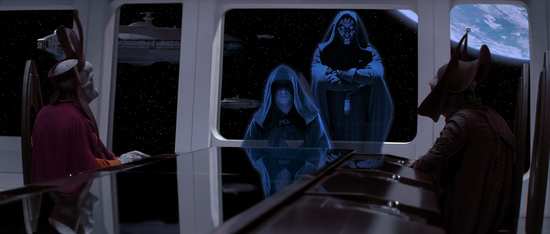
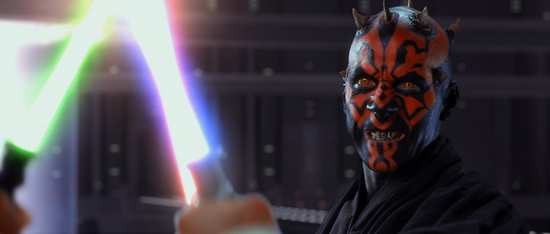
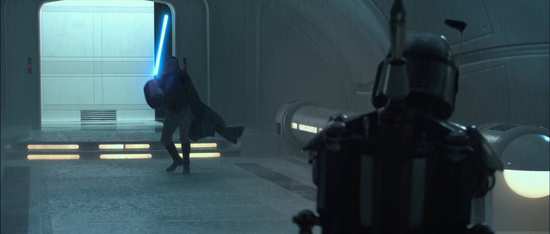
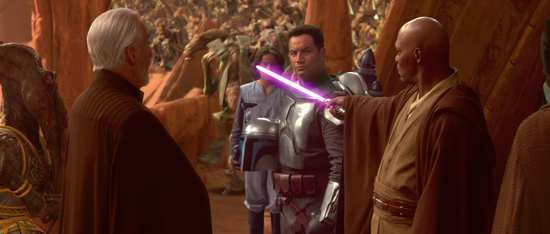
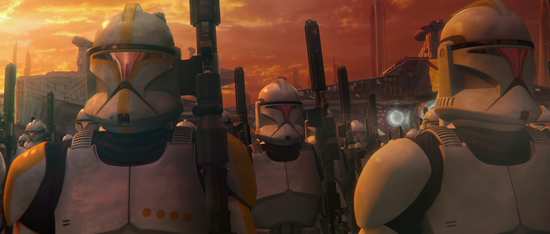
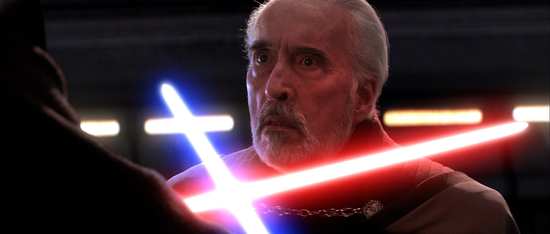
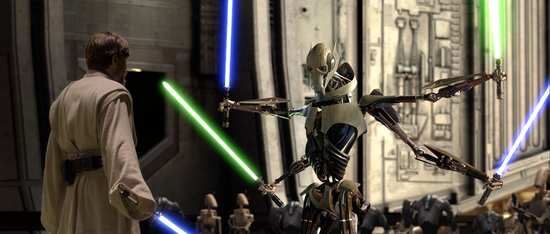

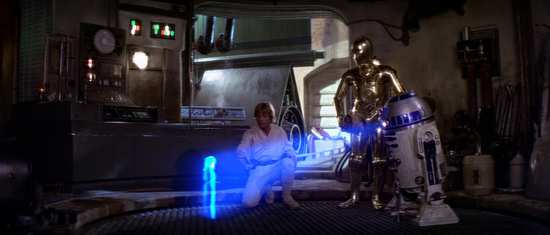
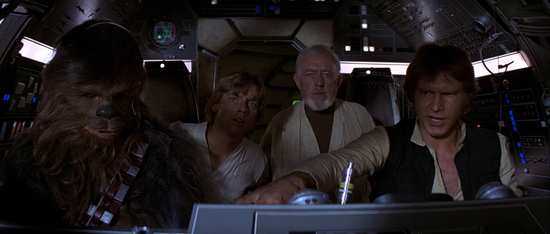
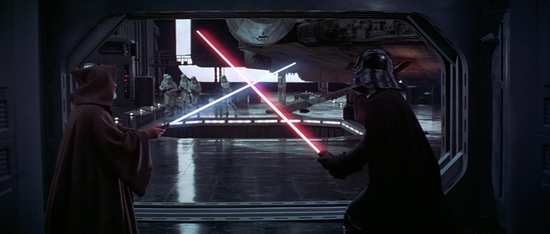
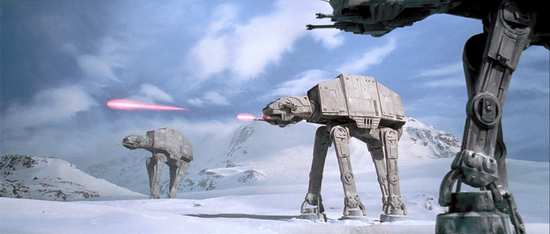
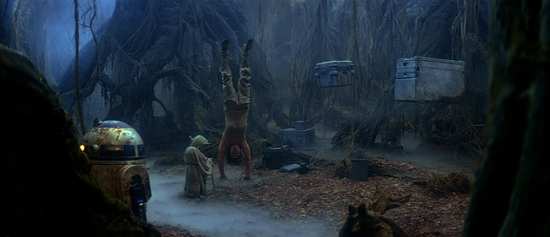
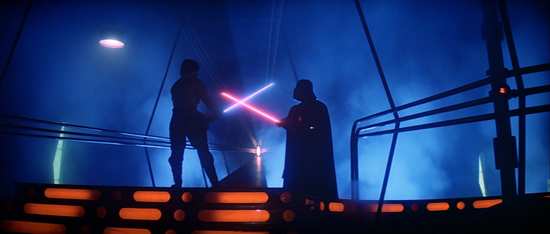
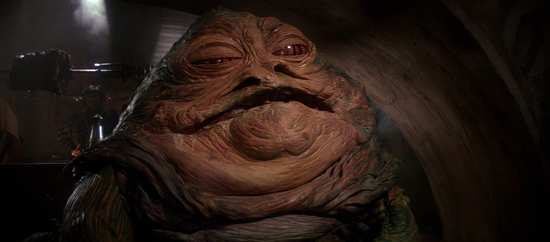
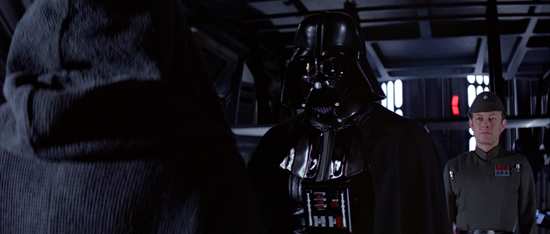
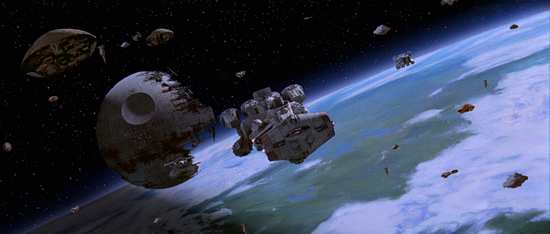
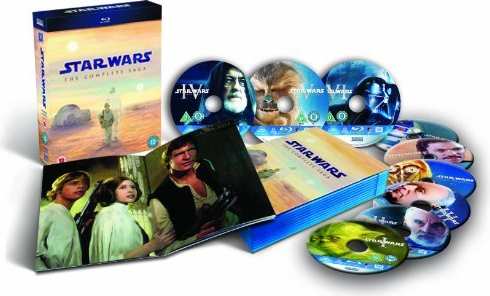
Your Opinions and Comments
Be the first to post a comment!